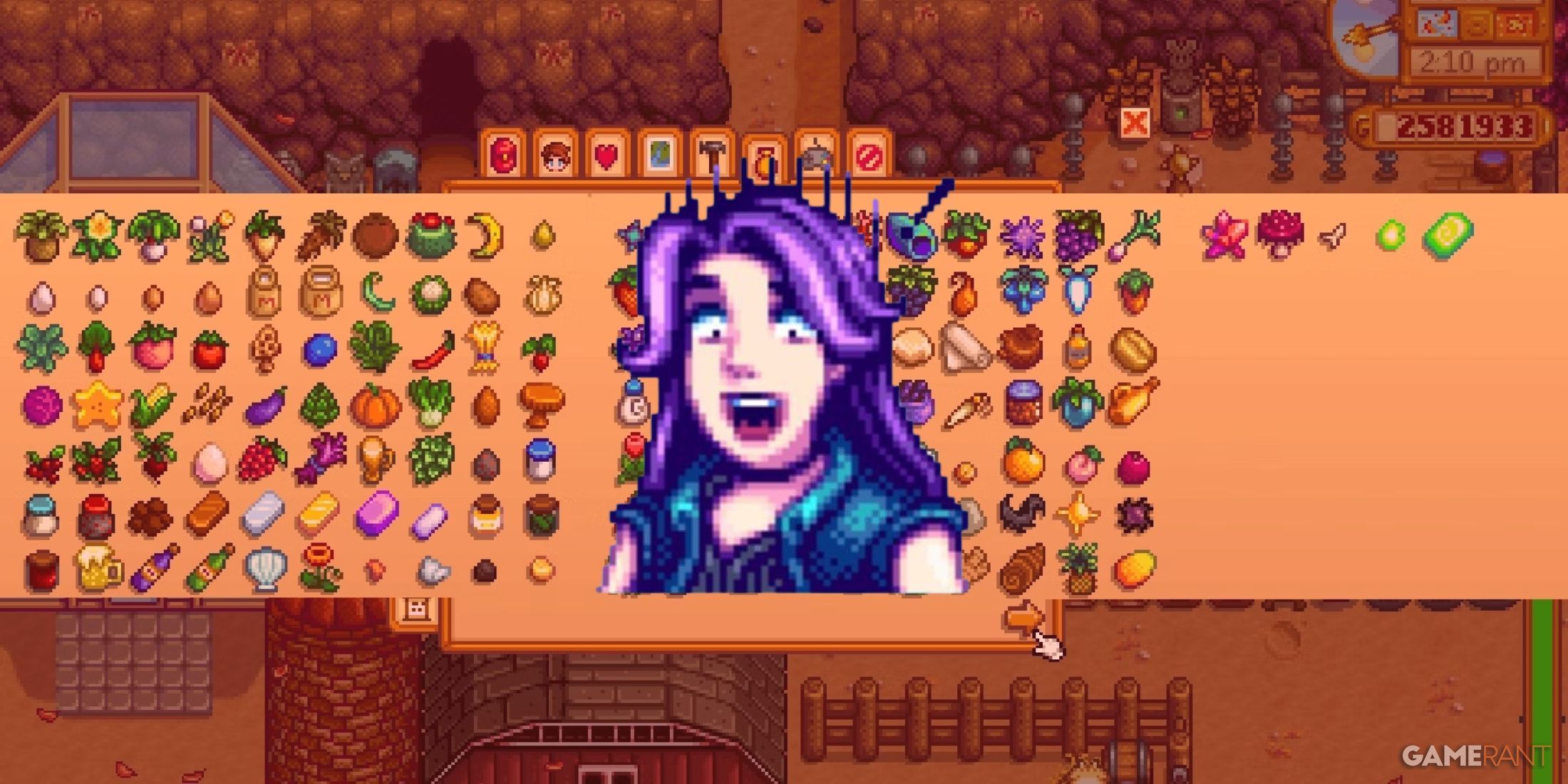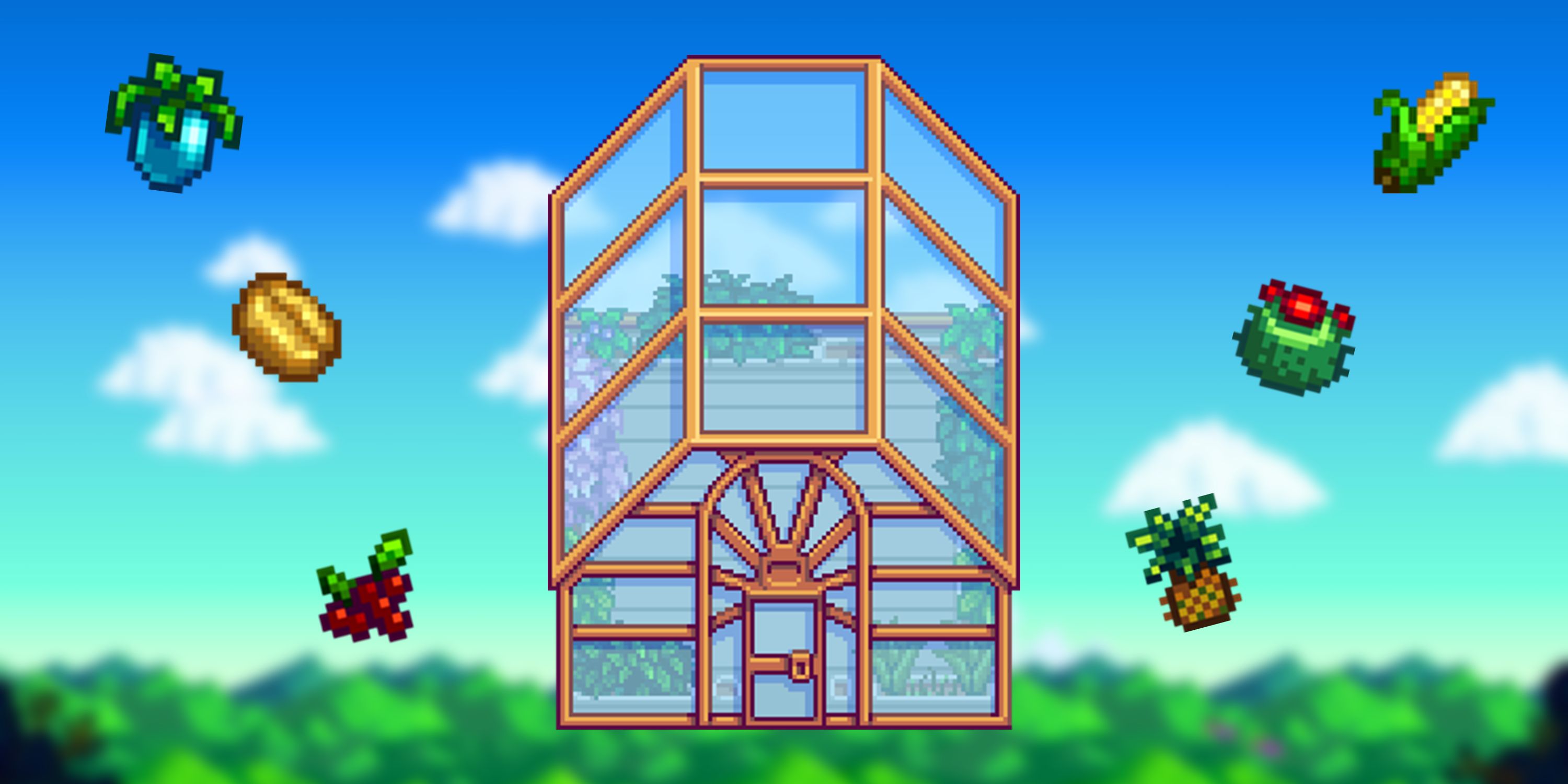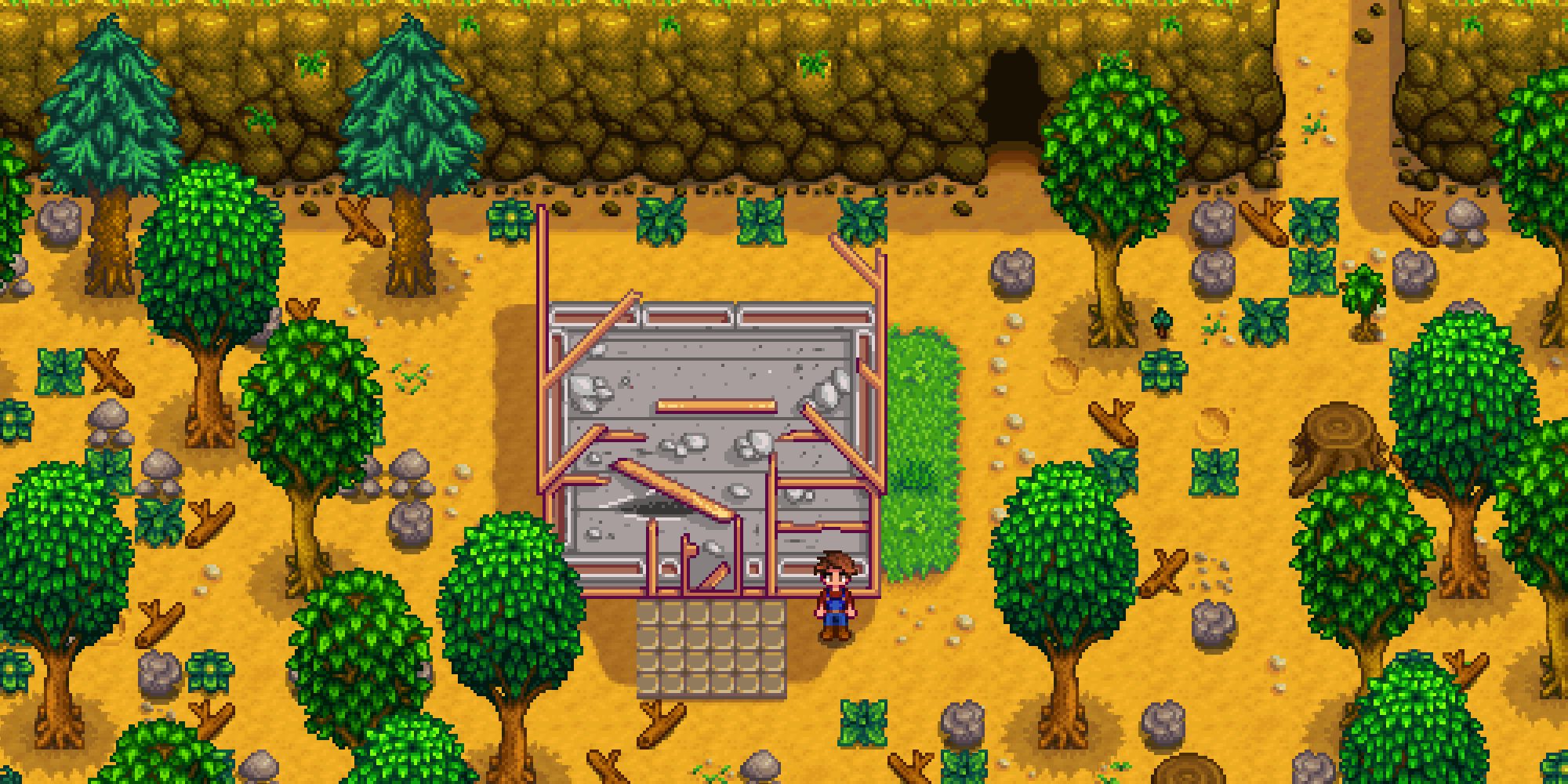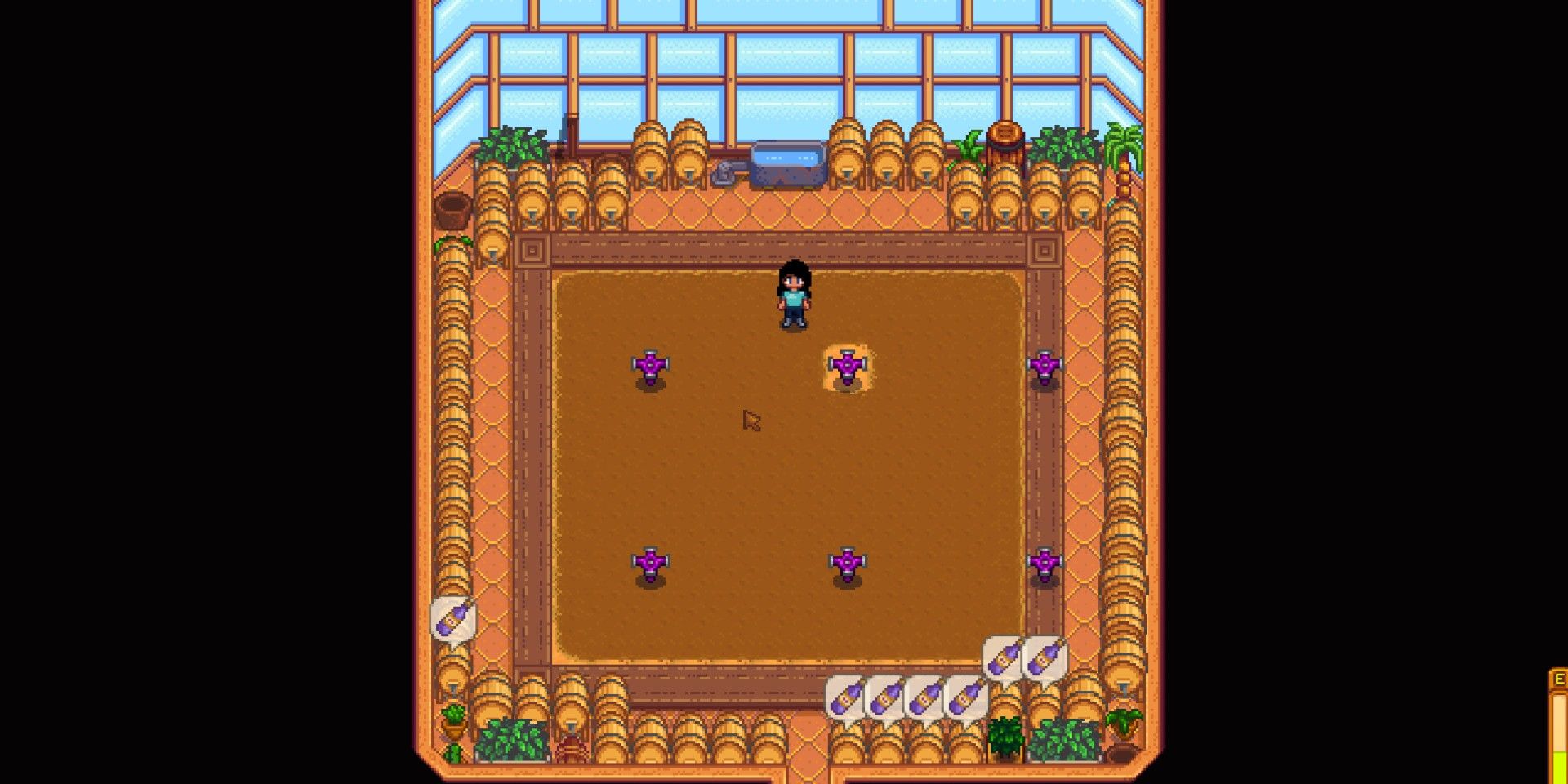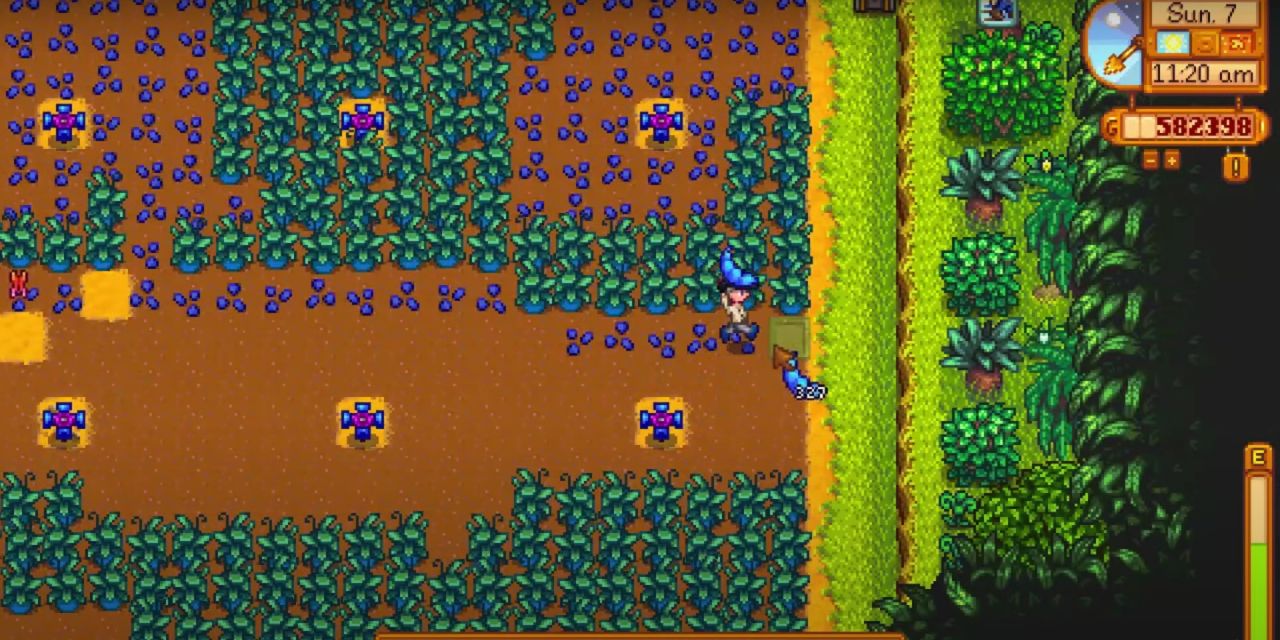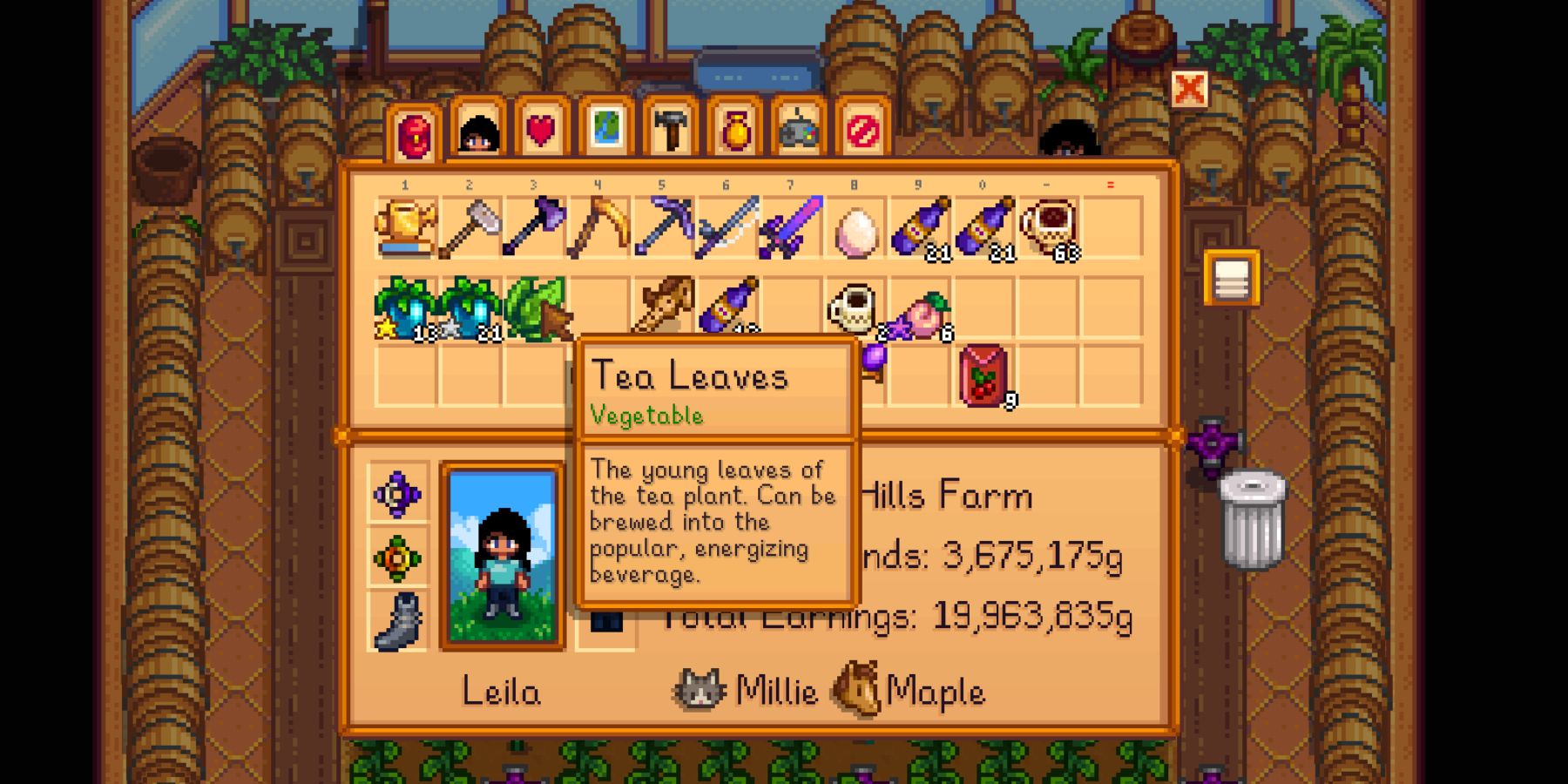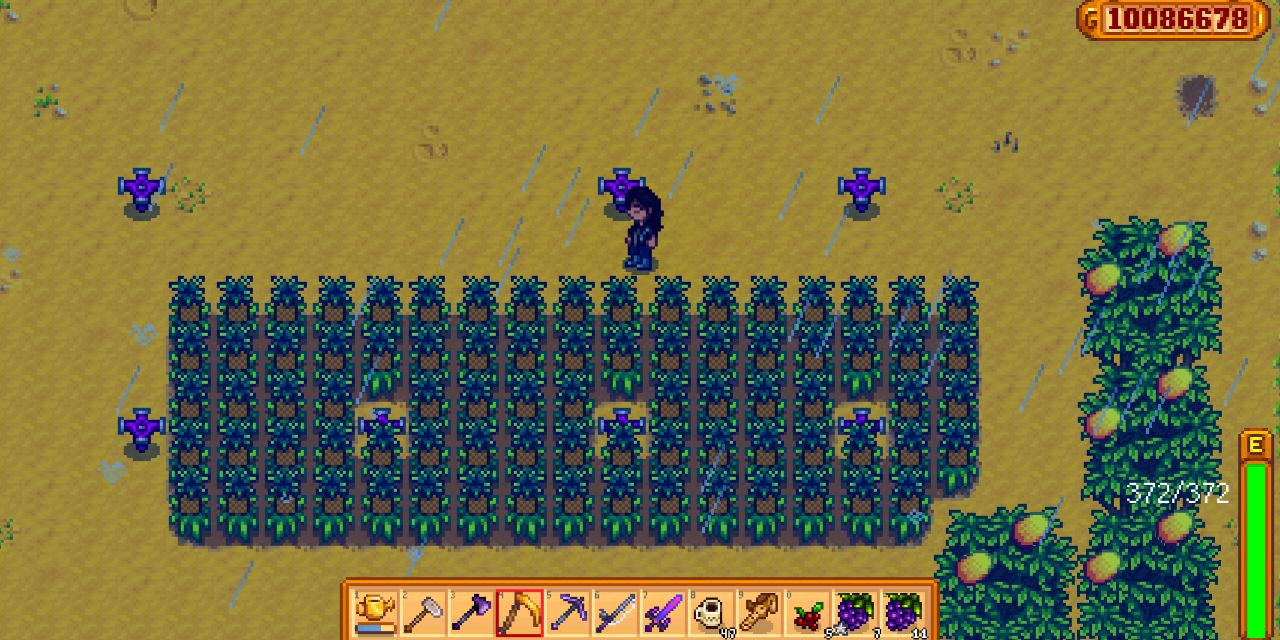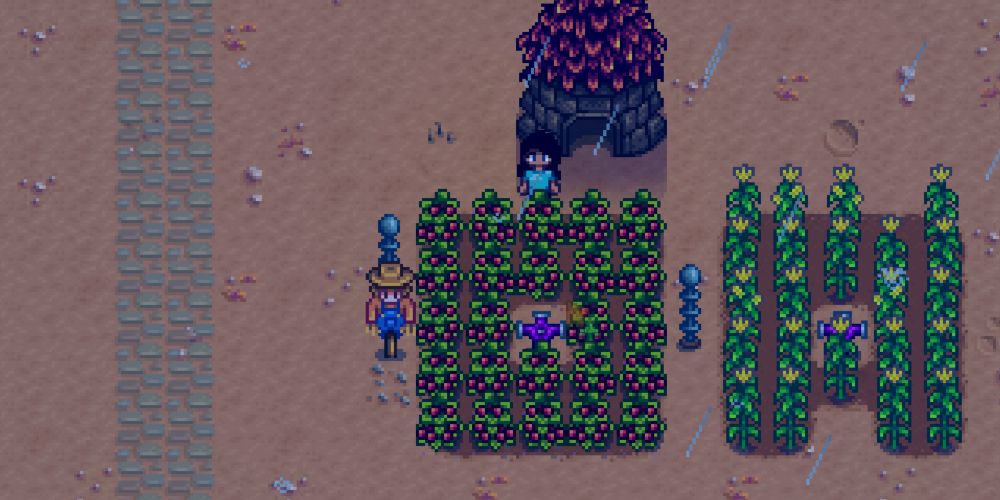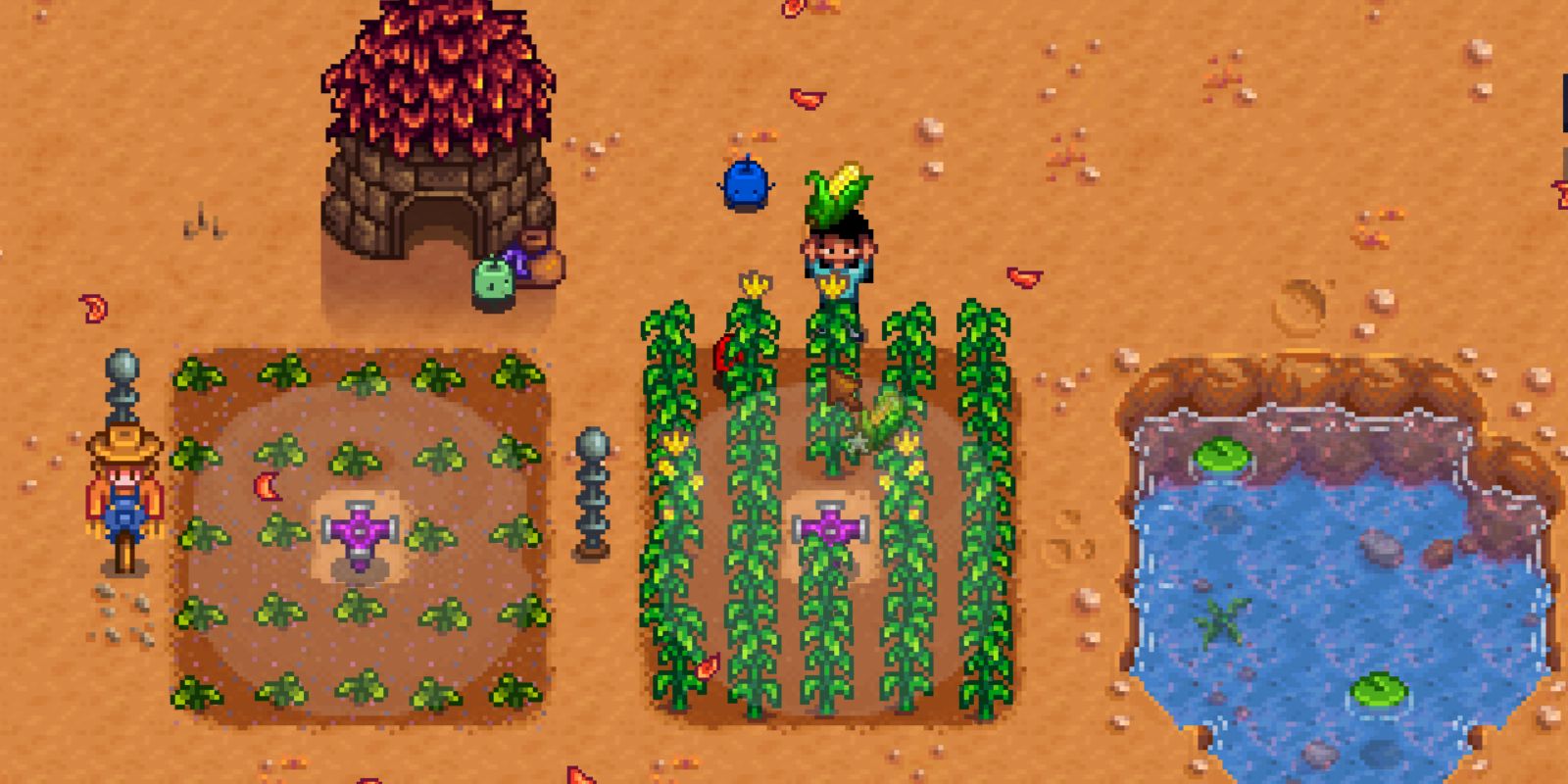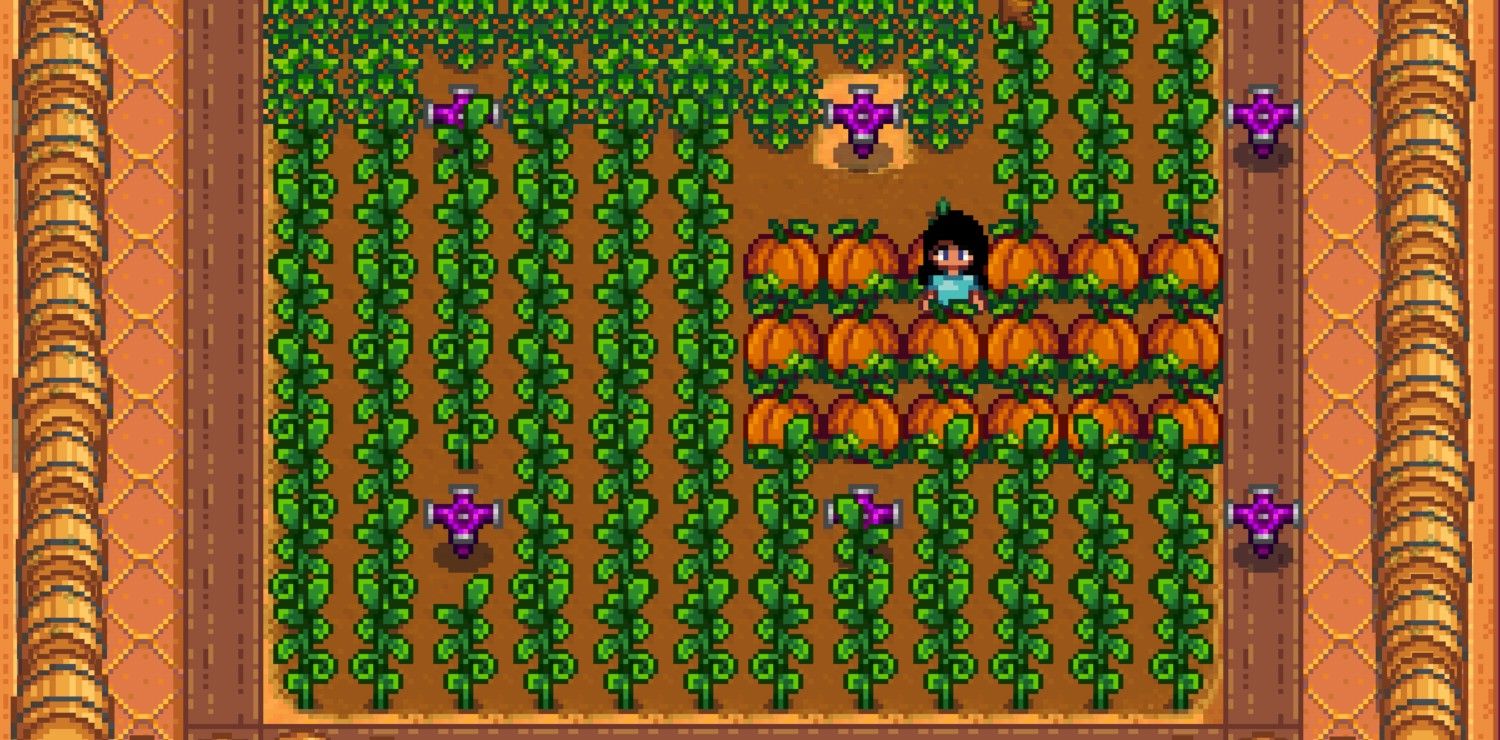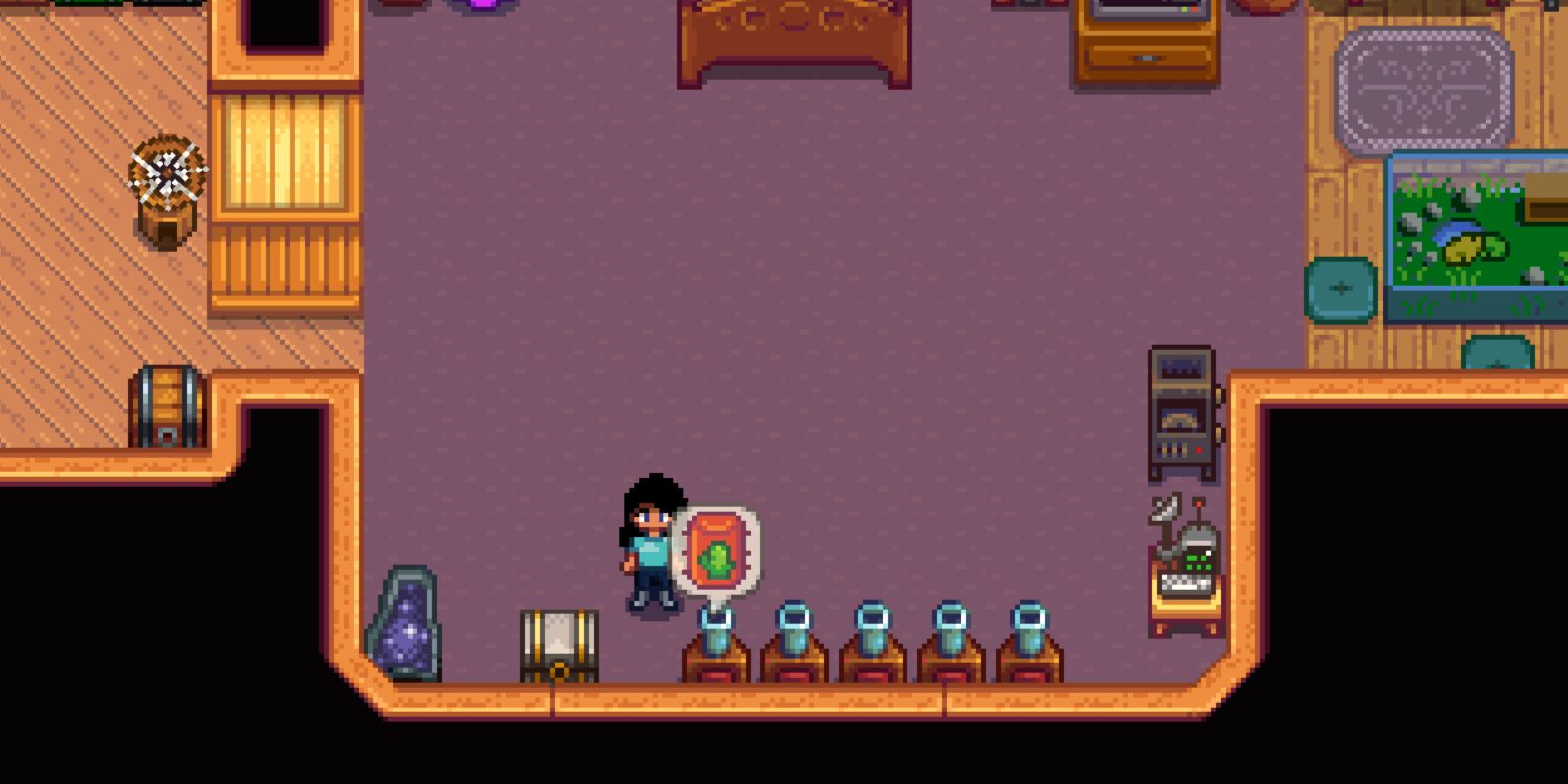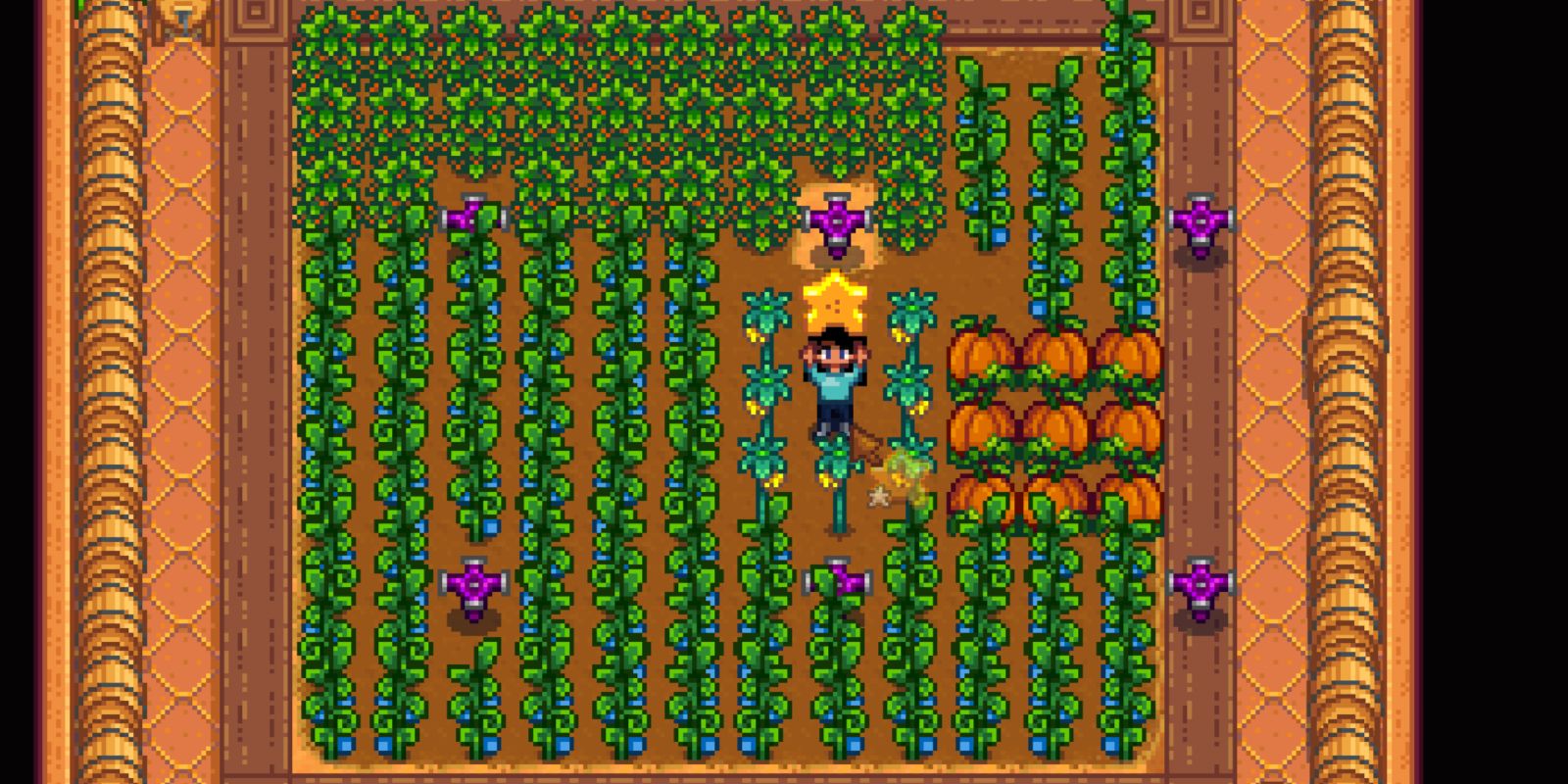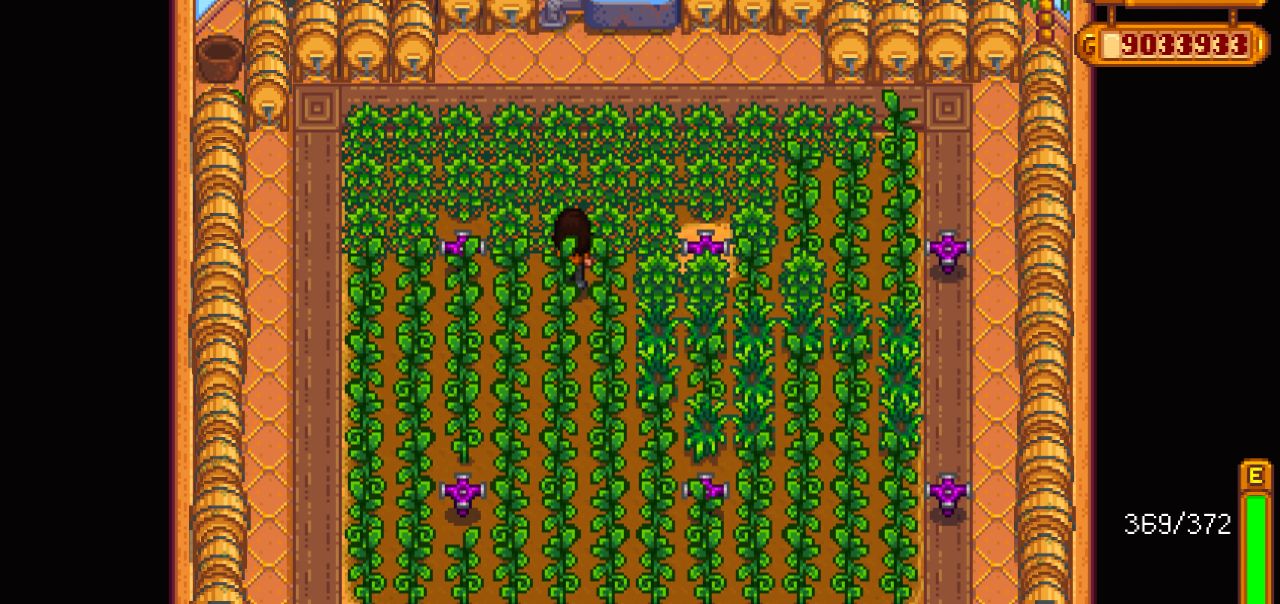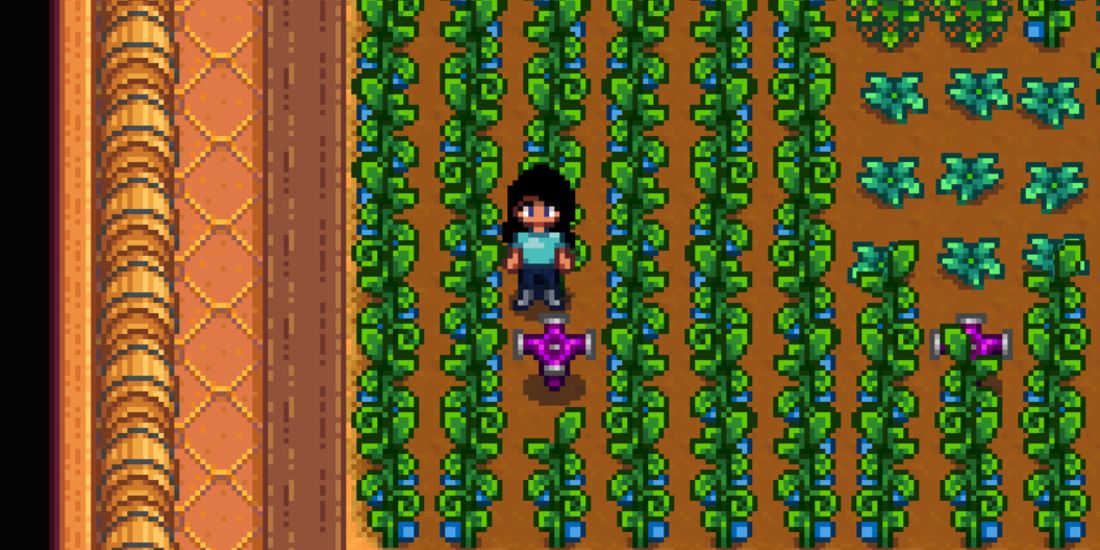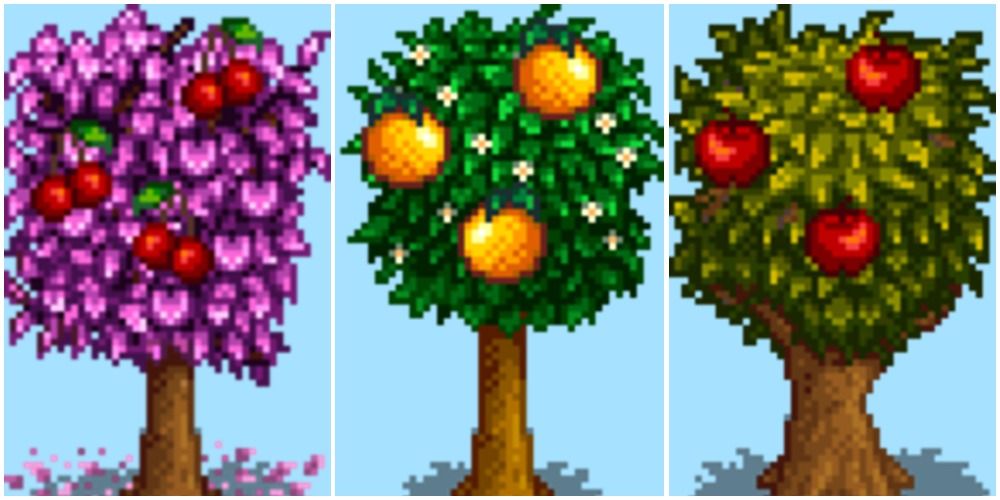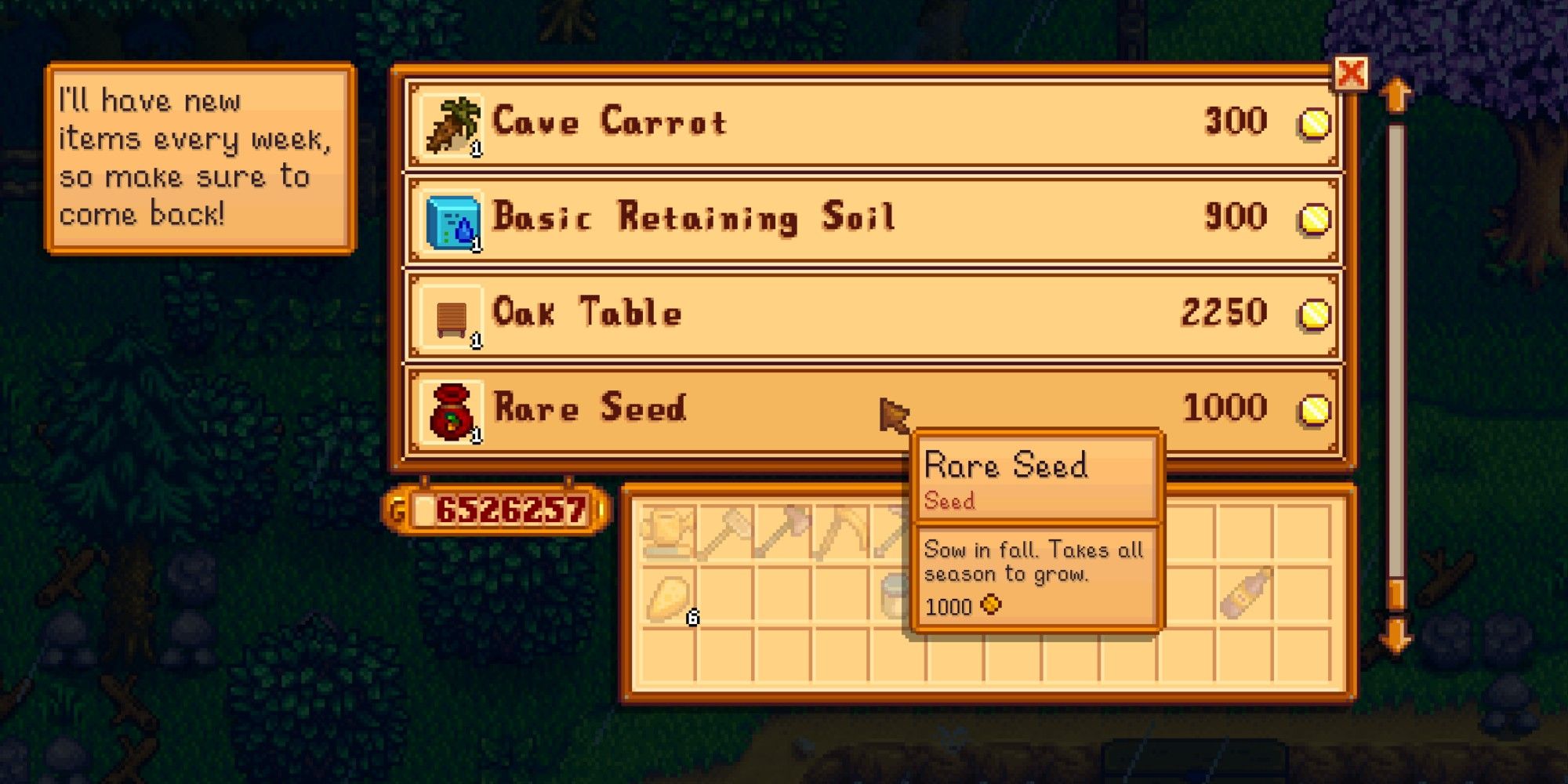When Stardew Valley players first inherit their family farm, they might be puzzled to see a broken-down old building in the northwest area. Upon completing the Pantry bundles in the Community Center, however, this building's purpose becomes clear: It's a greenhouse, with a 12x12 plot of tillable soil.
After the Junimos restore this building, players can use this area to grow any crop in any season. When new players first gain this amazing resource, though, some aren't sure how to use it most effectively. Here are some tips to help turn the greenhouse into a money-making machine.
Updated September 10, 2023, by Demaris Oxman: The continued success of Stardew Valley is a true testament to the staying power of great indie games. Fans remain dedicated to this charming farming sim, and are eager to see what the upcoming 1.6 update holds. Until then, though, there's still plenty to do in Pelican Town and on the player's farm. One of the best methods of farming lies with the Greenhouse, which provides the player with an indoor gardening space in which they can grow crops of any season. Space inside the greenhouse, through, is limited, and players need to know how to use it wisely. To help out new and returning farmers alike, this guide has been updated to include information on unlocking the greenhouse, maximizing its space, and the crops that will bring players the most profit.
How To Unlock The Greenhouse
When the player first inherits their grandfather's old farm, the greenhouse is a ruined shack near the fruit/mushroom cave. To restore it to its former glory (and more importantly, functionality), players must complete one of the bundles in the Community Center/Joja Mart Warehouse.
On the night that the bundle is completed, the player will get a cutscene after they go to bed, showing the Junimos or the Joja crew working on their greenhouse. The following morning, players can enter the structure to find a tillable plot of soil, where any and all crops will grow year-round.
Community Center Route
Players taking the Community Center route will need to complete the set of bundles in the Pantry. These include three bundles each requiring crops from different seasons: Spring, Summer, and Fall. Players must also complete the Animal bundle (animal products), Quality Crops bundle (gold-quality produce), and the Artisan bundle (artisan goods). If players choose the Remixed Bundles setting at the start of the game, any of the latter three may be replaced with any of the following:
- Fish Farmer's bundle: Items obtained from Fish Ponds
- Garden bundle: Flowers
- Brewer's bundle: Items produced from Kegs
- Rare Crops bundle: Ancient Fruit or Sweet Gem Berry
JojaMart Route
If the player pays 5000g for a JojaMart membership and takes the warehouse route, they will need to pay 35,000g to complete the Greenhouse Community Development Project.
Greenhouse Layout Tips
The best way a player can maximize space and efficiency in their greenhouse is by using Iridium Sprinklers to cover the tillable soil. This way, the player does not have to water each square by hand. And since Iridium Sprinklers water the largest area (24 tiles), players can cover the greenhouse planting area with only 6. This ensures the maximum number of tiles available for planting. Unlike plants grown outdoors, indoor crops do not need protection from crows or lightning; thus, there is no need for Scarecrows or Lightning Rods in the greenhouse.
In addition to the tillable plot in the center, the space along the walls of the greenhouse can also prove useful. Players can use these spaces to place Kegs, Preserves Jars, or other items used for crafting or for making Artisan Goods. Farmers can also place Gardening Pots in these spaces, further expanding their indoor farming space.
Greenhouse Farming Vs. Ginger Island Farming
Growing crops in the greenhouse has a lot of similarities with farming on Ginger Island, introduced in the 1.5 update to Stardew Valley. The primary similarity is that both allow all crops to grow in every season. All the crops listed here are also suitable for growing on the Ginger Island farm; however, there are certain crops that players may want to dedicate their island space to. Mixed Seeds will also give different results when planted on Ginger Island rather than in the greenhouse. Check out our guide to Ginger Island farming for more information.
Best Crops To Grow In The Greenhouse
Although any crop will thrive in the greenhouse, some are especially profitable or useful when planted indoors. Most of these are reproducing crops, as opposed to single-harvest crops. Reproducing crops typically die at the end of their season, but since crops of all seasons can grow in the greenhouse, crops like Blueberries, Eggplant, and Ancient Fruit essentially become immortal.
To further increase profits from greenhouse, players can place products into a Keg or Preserves Jar, or in the case of fruit, five pieces can be placed in a Dehydrator. In Kegs, vegetables will make Juice and fruits will make Wine; in Preserves Jars, vegetables will make Pickles and Preserves Jars will make Jelly. The dehydrator will turn Grapes into Raisins, and any other fruit into Dried Fruit. The sell prices of these artisan goods are calculated by the formulas listed in the table below, and apply to all fruits and vegetables on this list.
Item | Sell Value |
|---|---|
Dehydrated Fruit | 7.5 x (base fruit value) + 25 |
Pickles | 2 x (base vegetable value) + 50 |
Jelly | 2 x (base fruit value) + 50 |
Juice | 2.25 x (base vegetable value) |
Wine | 3 x (base fruit value) |
The one exception on this list is Wheat, which, when placed in a Keg, will make Beer instead of Juice. Beer's base sell value is 200g. Both Beer and Wine can be aged in a Cask to increase its quality and therefore its sell price.
Qi Fruit
One of Mr. Qi's challenges, available from his secret room on Ginger Island, is "Qi's Crop," which requires the player to cultivate and ship 500 Qi Fruit by the end of the season. Players will find the necessary seeds, "Qi Beans," by chopping down trees, digging in artifact spots, and more.
With a vast amount of produce to grow, players need all the space they can get. The greenhouse can come in extremely handy with the necessary area. The fruit itself ships for only 1g each; however, completing the challenge will reward the player with 100 Qi Gems.
Tea Bush
These little green trees will produce Tea Leaves every day during the last week of Spring, Summer, and Fall — and, if planted in an indoor location such as the greenhouse, Winter. Players can plant them in untilled soil as with a Fruit Tree, or in a garden pot. Tea Leaves can be placed in a keg to make Green Tea, which gives the player a massive boost to their max energy. They can also be pickled like other vegetables.
After witnessing Caroline's 2-heart event in her sunroom, she will send the player a crafting recipe for a Tea Sapling, which can be planted to grow into a Tea Bush:
- 2 Wild Seeds (any)
- 5 Fiber
- 5 Wood
When selling, Tea Leaves benefit from the Tiller profession, which increases profits by 10%. Green Tea and Pickles benefit from the Artisan profession, increasing their value by 40%.
Item | Without Tiller/Artisan | With Tiller/Artisan |
|---|---|---|
Tea Leaves | 50g | 55g |
Green Tea | 100g | 140g |
Pickled Tea Leaves | 150g | 210g |
Pineapple
Since they take fourteen days to mature and seven days to regrow, it's a waste to plant pineapples on the farm during the summer. These tropical fruits grow year-round on Ginger Island, but for those who prefer to keep their farming in one place, the greenhouse is a great option.
A large pineapple harvest is vital for players trying to complete Caroline's "Island Ingredients" special order. She requests 100 of these golden fruits, so the greenhouse is a great space to utilize.
Pineapple seeds are purchasable from the Island Trader for 1 Magma Cap. Players may also find them when slaying monsters in the Volcano Dungeon, or inside Golden Coconuts. Pineapples can be sold as produce for the following prices:
Quality | Without Tiller Profession | With Tiller Profession |
|---|---|---|
Regular | 300g | 330g |
Silver | 375g | 412g |
Gold | 450g | 495g |
Iridium | 600g | 660g |
Blueberries
This summer crop takes a long time to reach its full potential, since it requires thirteen days to mature. Planting them indoors, however, allows the plant to remain standing and keep reproducing after its season ends. Not only can the player turn these fruits into artisan goods, but they can also use them to make Blueberry Tart, a great gift for many villagers.
Blueberry Seeds can be bought during the summer for 80g at Pierre's, and blueberries sell for:
Quality | Without Tiller | With Tiller |
|---|---|---|
Regular | 50g | 55g |
Silver | 62g | 68g |
Gold | 75g | 82g |
Iridium | 100g | 110g |
Cranberries
Like blueberries, these fall crops each yield multiple units at harvest, and continue reproducing upon maturity. They complete their growth cycle in about half the time that blueberries do, making them an even better option for greenhouse growing. As with other fruits, players can use their Cranberries to make artisan goods. They’re also an ingredient in recipes such as Stuffing, Cranberry Sauce, and Super Meal.
Players have two options to buy Cranberry seeds in the fall: at Pierre's for 240g, or 300g at JojaMart. The berries themselves sell for:
Quality | Without Tiller | With Tiller |
|---|---|---|
Regular | 75g | 82g |
Silver | 93g | 102g |
Gold | 112g | 123g |
Iridium | 150g | 165g |
Corn
Just like in the real world, corn has versatile uses in Stardew Valley. It's used in several recipes, and can be pressed into oil which is essential for cooking. Growing it outside, though, can get a little tedious since it takes so long to mature. Though it grows in both summer and fall outside, greenhouse-grown corn lets the player reap greater rewards after that long wait.
Like most seeds, Corn Seeds are cheaper at Pierre's, costing 150g as opposed to 187g at JojaMart. The mature product sells for:
Quality | Without Tiller | With Tiller |
|---|---|---|
Regular | 50g | 55g |
Silver | 62g | 68g |
Gold | 75g | 82g |
Iridium | 100g | 110g |
Giant Crops
Cauliflower, melons, and pumpkins all have the potential to form giant crops. Any 3x3 square of these crops may, on any day once fully grown, mutate into a giant form. This can be broken apart with an axe to yield 15-21 items. Players have to leave their plants alone for a while in order for this to happen. However, regular crops die at the end of their season. Planting these items in the greenhouse allows the player to let them sit indefinitely, offering more chances at a giant crop.
Cauliflower and Melon seeds both cost 80g at Pierre's and 100g at JojaMart. Pumpkin seeds are 100g and 125g, respectively. Players can purchase Cauliflower seeds in Spring, Melon in Summer, and Pumpkin in Fall. Each item's produce fetches a different price:
Item | Without Tiller | With Tiller |
|---|---|---|
Cauliflower (regular) | 175g | 192g |
Cauliflower (silver) | 218g | 239g |
Cauliflower (gold) | 262g | 288g |
Cauliflower (iridium) | 350g | 385g |
Melon (regular) | 250g | 275g |
Melon (silver) | 312g | 343g |
Melon (gold) | 375g | 412g |
Melon (iridium) | 500g | 550g |
Pumpkin (regular) | 320g | 352g |
Pumpkin (silver) | 400g | 440g |
Pumpkin (gold) | 480g | 528g |
Pumpkin (iridium) | 640g | 704g |
Cactus Fruit
Since they've adapted to the scorching air of Calico Desert, cactus fruits don't grow at all on the player's farm, even in summer. However, they flourish in the greenhouse, where they bear fruit every three days after maturing. Though they're not massively valuable on their own, players can also turn their cactus fruit harvest into artisan goods. Additionally, these desert delicacies make top-tier gifts for Pam, Linus and Sam.
Cactus Fruit seeds cost 150g at Sandy's store, the Oasis, in Calico Desert. Players can only purchase them after completing the Vault section of the Community Center/JojaMart, which will result in the bus being restored. The fruit itself sells for:
Quality | Without Tiller | With Tiller |
|---|---|---|
Regular | 75g | 82g |
Silver | 93g | 102g |
Gold | 112g | 123g |
Iridium | 150g | 165g |
Starfruit
These summer seeds, also purchased from Sandy, yield one of the game's most profitable crops. However, they take thirteen days to mature without the use of Speed-Gro. This makes them a great candidate for greenhouse farming, since the player is no longer limited to the summer season.
Players can sell their Starfruit for high prices, or turn them into artisan goods. Their 400g price tag may seem steep; however, Starfruit seeds are worth the price.
Quality | Without Tiller | With Tiller |
|---|---|---|
Regular | 750g | 825g |
Silver | 937g | 1030g |
Gold | 1125g | 1237g |
Iridium | 1500g | 1650g |
Coffee
Speed boosts are invaluable in every aspect of Stardew Valley. If the player grows Coffee in the greenhouse, they'll never have to move at normal speed again. Coffee plants produce continually once grown, meaning that in the greenhouse, they never die. A few coffee plants can provide a huge surplus of the delicious beverage. Additionally, this can help players complete Qi's Culinary Challenge by providing the ingredients for lots of Triple Espresso.
For reasons unclear, players may find Coffee Beans dropped by Dust Sprites, which roam levels 40-69 in the Mines. The Traveling Cart may also sell them for anywhere between 100g – 1000g. Players will likely find themselves making coffee in kegs rather than selling the beans, but those strapped for cash can earn a few coins:
Quality | Sell Price |
|---|---|
Regular | 15g |
Silver | 18g |
Gold | 22g |
Iridium | 30g |
Ancient Fruit
The player first acquires Ancient Seeds from Gunther, after donating the artifact of the same name to the museum. Though they can be planted in any season except winter, they take 28 days to grow. Like other reproducing crops, Ancient Fruit becomes immortal in the greenhouse. Greenhouse-grown Ancient Fruit provides the player with an infinite source of income, making them one of the best options for this section of the farm.
Ancient seeds cannot be purchased; players must either receive them as a reward from Gunther or craft them from the Ancient Seed artifact. To avoid the tedium of hunting down Ancient Seeds, it is highly recommended that players use the Seed Maker to plant their bumper crop.
Quality | Without Tiller | With Tiller |
|---|---|---|
Regular | 550g | 605g |
Silver | 667g | 755g |
Gold | 825g | 907g |
Iridium | 1100g | 1210g |
Fruit Trees
Fruit trees typically have a single season in which they produce fruit. Inside the greenhouse, though, they bear fruit year-round. This massively increases their profit margin, since they produce four times as much fruit as they would outside.
Most fruit tree saplings are available to purchase at Pierre's, and their prices vary as follows:
- Apricot: 2000g
- Cherry: 3400g
- Peach: 6000g
- Orange: 4000g
- Apple: 4000g
- Pomegranate: 6000g
The other two saplings, Mango and Banana, can be found on Ginger Island, most reliably by breaking Golden Coconuts. They can also be purchased from the Island Trader for the following prices:
- Mango: 75 Mussels
- Banana: 5 Dragon Teeth
Each type of orchard fruit sells for different prices. This complete guide to Stardew Valley's fruit trees offers more inforation about profits, artisan goods, and the other ways players can use Fruit Trees.
Sweet Gem Berries
This crop grows agonizingly slowly. If the player doesn't plant the Rare Seed on the first day of Fall, there's no hope of harvesting it, since it takes a full 28 days to mature. Planting it in the greenhouse, however, removes this pressure.
The player can give one Sweet Gem Berry to Old Master Cannoli's statue, allowing them to access a Stardrop. However, these berries are also very profitable selling for 3,000g at their lowest quality. Rare Seeds have only one source, and they're quite expensive: players can purchase them for 1000g from the Traveling Cart. Once one or two seeds have been grown to maturity, it is recommended that players use the Seed Maker to obtain more, in order to save a few gold.
Quality | Sell Price |
|---|---|
Regular | 3000g |
Silver | 3750g |
Gold | 4500g |
Iridium | 6000g |

